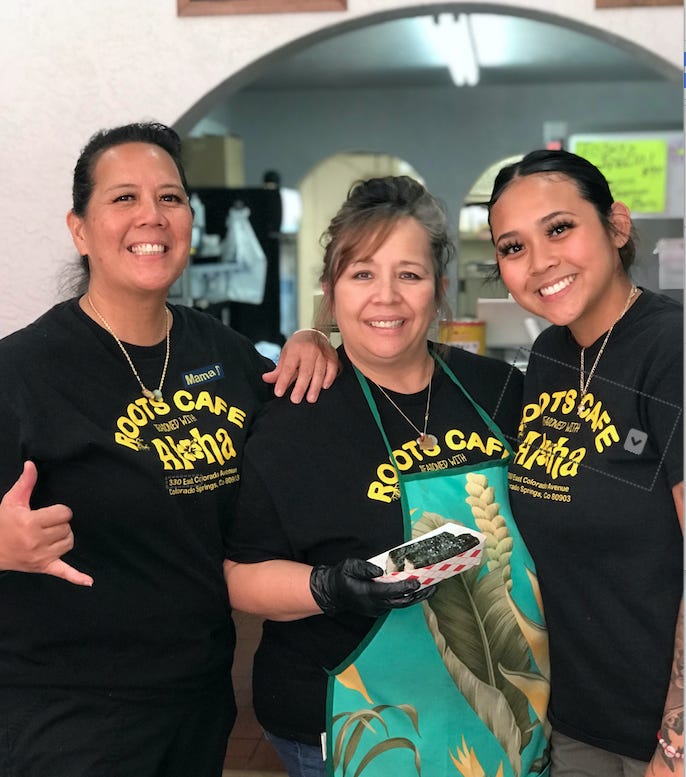
Authentic Hawaiian eatery Roots Cafe opened two months ago in the legacy location of El Taco Rey, which closed its doors at the start of 2022 after 45 years in business.
Owner Dana “Mama D” Moore says she’s a self-taught chef with around 35 years industry experience, mostly in front-of-the-house. Roots’ recipes are hers, adapted from typical Hawaiian cuisine, which is to say modified for mountain living. She skips the fresh and/or raw fish dishes and adapts as needed around classic island fare, influenced by a multitude of cultures, most notably Polynesian, Asian (Japan, Korea and China) and American.
Moore’s family — including her daughter Skyly, Roots’ manager who’s working the order counter during our visit — moved here five years ago to found a Foursquare Church in Southeast Colorado Springs. Moore’s sister, Roots’ GM Pamela Velasquez, is also a pastor. Their congregation was quite small, only 20 or so members, which allowed Moore the capacity to cook for gatherings, and they obtained a food truck which they parked in back of the church. They’ve since left that location and truck behind, saying they’re “a church without walls” at the moment. “Food and spirituality aren’t separate for us,” they tell me in the same breath, pointing out that they aren’t overtly religious or pushy, “but we’re available to talk if someone wants to.”
The sisters had been dreaming about a restaurant for years, and experienced a “let’s go for it” moment after El Taco Rey’s space became available. Velasquez formerly taught customer service for property management, which partly explains the whole team’s outwardly friendly customer interfacing. They shout “mahalo” when I add gratuity to my bill and when we’re departing. They’re all smiles, and Mama D fittingly has a matriarchal demeanor as she runs her grill solo; makes time to come up and touch tables in between orders; and playfully dodges my probing ingredient questions about her food, maintaining secrecy to most of her methods.
My buddy and I order substantial mixed plates for $15.50 each. They offer a choice between kalbi, chicken katsu, hamburger steak or garlic shrimp (pick two) and the plate includes two scoops of rice and the house mac salad. We make a couple modifications and additions, to include turning the hamburger steak into a Loco Moco (by adding rice under the patty and an egg and gravy on top) and subbing cucumber kimchi for one of the mac salads. We also order a spam musubi starter, a Kalua Pork entrée and a couple homemade desserts: chocolate macadamia banana bread and butter mochi. (Yes, there will be to-go boxes.)
Here’s how it all shakes out:
• Spam musubi. For many people I talk to, Spam alone’s the dealbreaker with this dish. They just won’t touch it. I’m no Spam fan at home, and some renditions I’ve tried out and about as well as on past vacations (to Maui and Kauai) serve a heftier slab of the compressed pork. I’ve never loved the item, but I do here. Moore slices the meat thinner and does a full nori wrap around the rice versus a partial strip, like on typical onigiri sushi. I’m not sure exactly what’s in her sauce, but it’s simple and a little tangy and sweet in a teriyaki way. That balances the other components’ saltiness as does ample rice filling. It’s yummy umami all the way.
• Kahlua pork. Since it would be quite labor intensive and the County Public Health would certainly frown upon it (read: entirely freak out), Roots Cafe does not cook a whole pig in an underground pit (an imu) — which is what Kahlua translates to on island as a traditional, special-occasion feast. Nor does Moore utilize typical banana leaves, saying she prefers a certain leaf back home that she can’t get here. But she does use a true Hawaiian Alaea red clay sea salt. And she slow cooks her pork for eight to 12 hours and gets a good amount of smoke flavor on it. Again she’s cryptic with details, aside from dropping a little Gordon Ramsay knowledge on us (a less-is-more approach to salting). But whatever she’s doing works great, with green onion and pickled red onion garnishes adding a sharp, acidic dynamic to the dish. Get it.
• Loco Moco. It’s rice, a seasoned hamburger patty, an egg cooked to your preference and a gooey gravy cap. And it’s sort of read-as-written dish, taking little imagination to taste with your mind’s eye. (I may have just crossed a sensory boundary there but it works for me.) Anyway, I’m not a big brown gravy guy — and this one’s made partly with a commercial product I’m told — so this would be my personal item to skip next time. But I understand the appeal to others and I do enjoy the richness the egg yolk bleed adds to the beef. And the recipient of my leftovers quite likes it reheated.
• Garlic shrimp. Some faithful Side Dish readers I got the pleasure of meeting this past weekend spoke highly of Roots before my visit and particularly mentioned this dish. Perhaps an odd detail to lead with, they told me they ate the shrimps’ shells (sans tails) in a fashion they typically don’t elsewhere. Sure enough, I experienced the same thing when it came my turn, impressed by how they easily broke down and incorporated into bites with surprisingly little notice texturally. Garlic and butter never fail together, though I will say there’s the lingering aftertaste of vinegary jarred garlic which doesn’t live up to fresh garlic’s thunder. Moore indicated that mincing her own had become a prep issue in the early days, so she modified. She does share that they meticulously devein the shrimp, though, and soak and clean them thoroughly in room-temp water which apparently softens the shell. And she adds a “coating” on them, not a breading, for additional flavor.
• Mac salad. It’s got a moist slaw texture and a deeper flavor we initially mistake for surimi (krab). Moore says it’s not that, but those little orange flecks we see in a scoop are tiny carrot bits. We like the freshness, dual starchiness alongside the rice and lightness to it, especially contrasting the gravy.
• Kalbi. Moore soaks her short ribs in a pretty traditional Korean marinade (which includes pear juice) for 48 hours, resulting in ideally tender, chewy bites. There’s a soy saltiness, sesame oil kiss and mildly sweet finish, with nice char flavor on the edges. I wouldn’t change a thing, other than maybe ordering a double portion on a future visit.
• Chicken katsu. Super juicy inside, with good moisture retention under the highly crispy jacket. I’m told there’s seven seasonings in the panko breading (Kurosawa would be proud), with white pepper being one of them. They’re perfect as they are, but you can add a house barbecue sauce served on the side if you want a tangy kick that tastes predominantly ketchup based. Well played, Mama D.
• Cucumber kimchi. A great pairing for both items, particularly the kalbi. Moore’s not shy with the gochugaru, yielding a fairly high spice level, which I love. The cucumbers still refresh the palate despite their heat pop and sour punch.
I didn’t photograph the butter mochi or chocolate macadamia banana bread as they were simply bundled in plastic wrap at the register and better taken home to be warmed, I learn. If you can’t wait for that, they’ll both be texturally tackier and chew a little more dense. But warmed briefly in a microwave, they soften up some and sort of melt in the mouth. The mochi’s kind of like a starchy muffin, with a subtle flavor that’s somewhat nondescript other than a sweet rice taste with a faint dried coconut finish from a little garnish. Ripe banana essence kicks off the bread, with chocolate chip sweetness riding atop that and just a hint of the macadamia’s nutty butteriness. The have an easy homemade charm to them, like basic baked goods made with love.
Aftertaste:
My dining mate served in the Navy and spent some time in Hawaii. He emotionally responded to the meal, connecting it to fond memories. Roots achieved transporting him, if only for a moment. I also recalled my time in Hawaii. That’s what the eatery does best: convey that sense of place — and taste. It’s just missing the ocean view and salinity in the air.
Of course, if you sit outside at the picnic tables, and close your eyes and try real hard, you maybe can just imagine that fast traffic whooshing by on Colorado Avenue as passing, crashing waves and ocean white noise.
… Eh, probably not. That’s a stretch. As with the Kahlua, there’s only so much you can authentically do when you’re here not there. But Roots certainly does its best and it shows. El Taco Rey could have been replaced by something much less sincere and special.



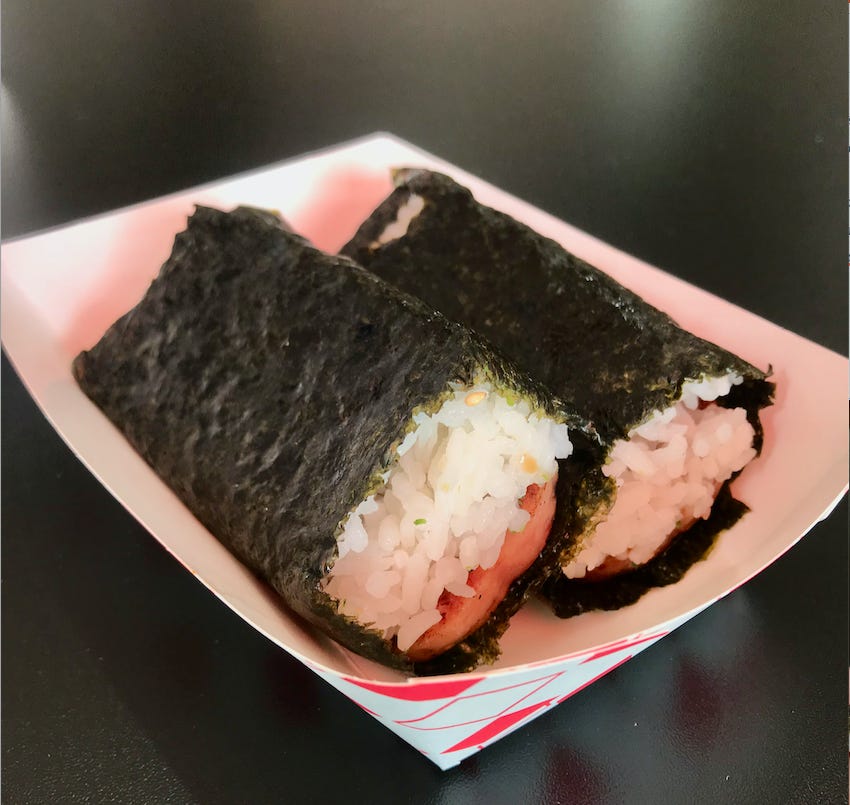
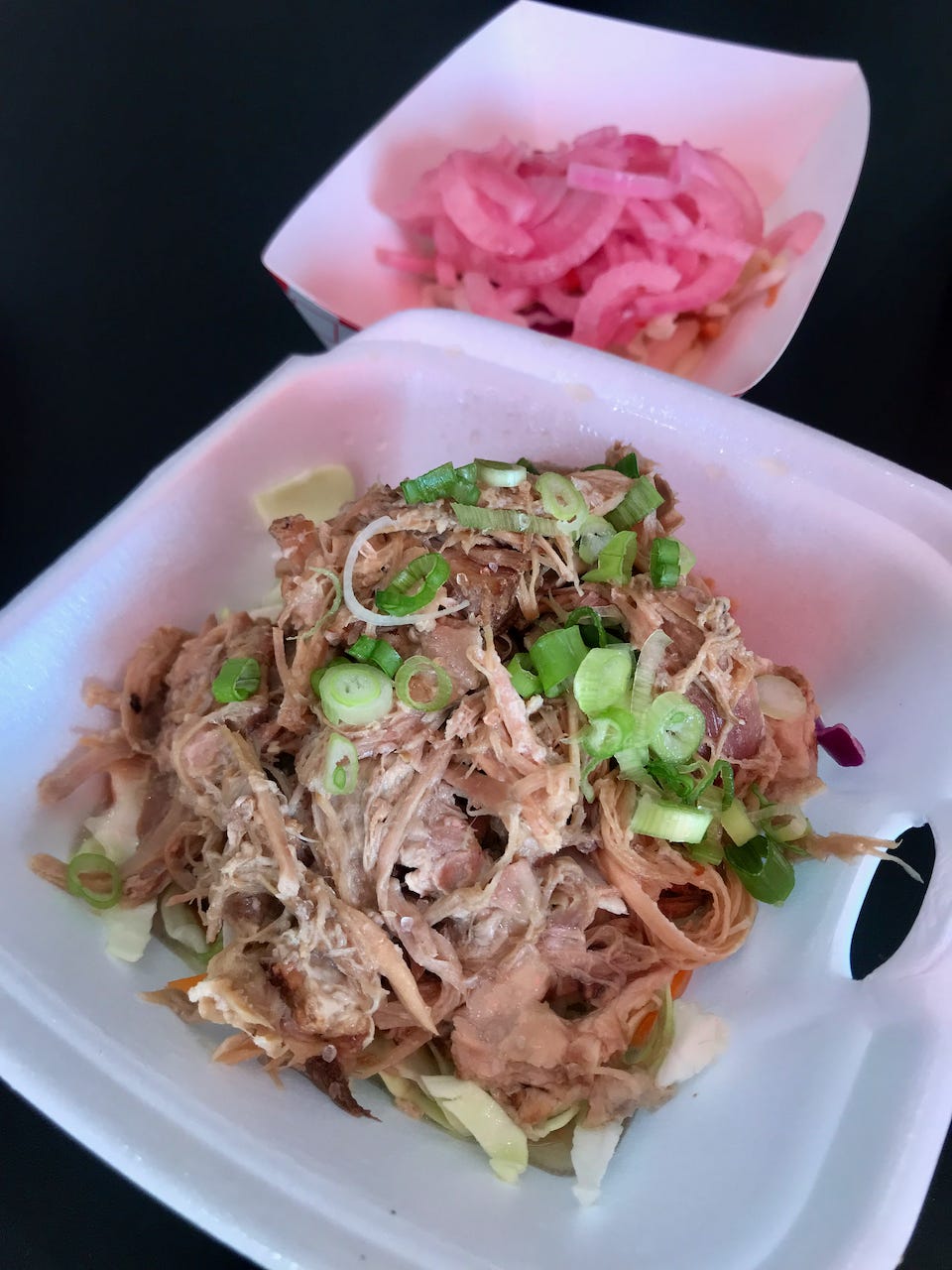
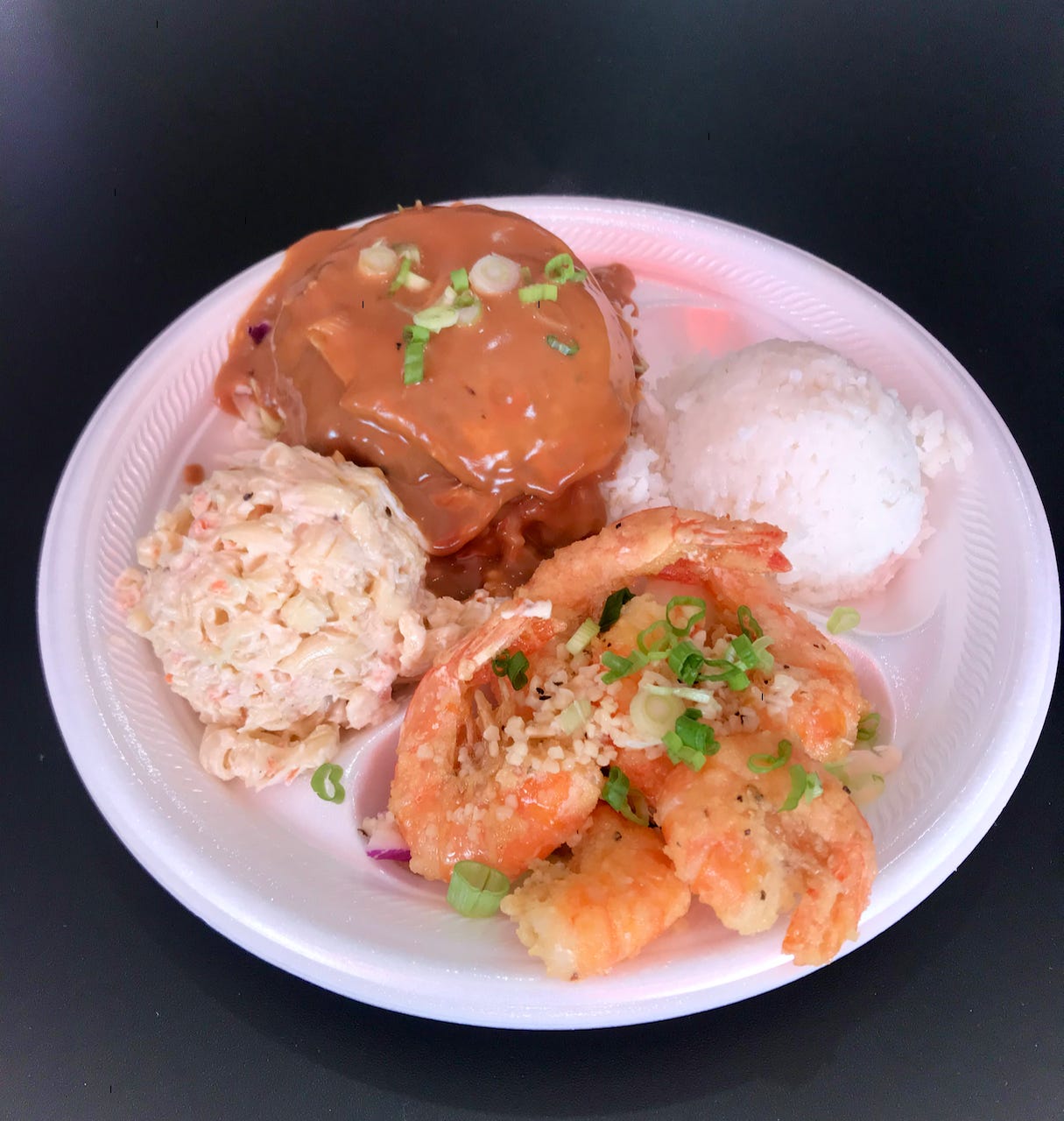
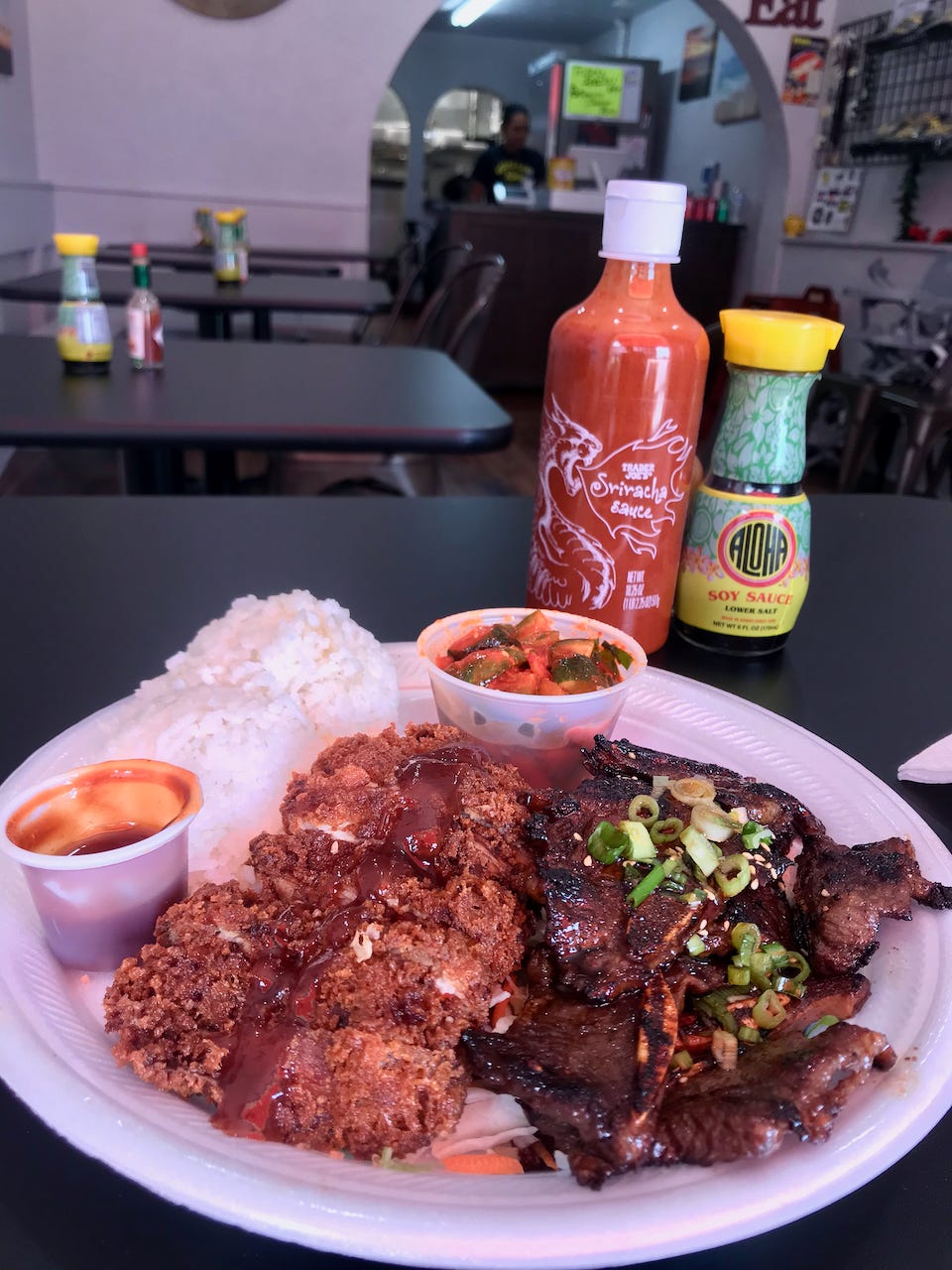
Appetizing the way the various dishes are described.